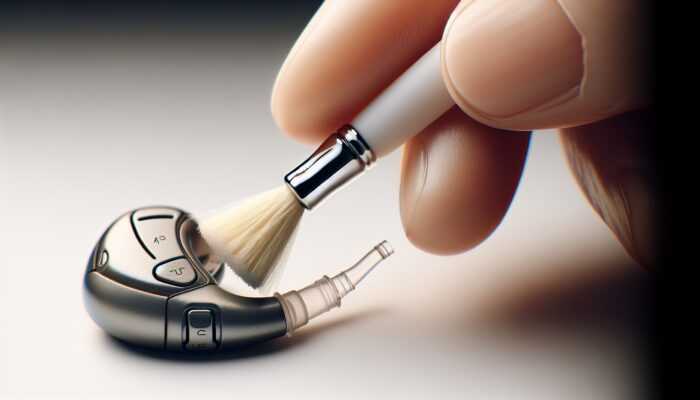Transforming Social Connections Through Enhanced Hearing
Hearing aids are revolutionary devices that fundamentally change the way individuals engage with the world around them. By effectively bridging communication gaps, they foster meaningful connections that many people might not fully appreciate. The ability to engage in lively discussions, participate actively in group settings, and mitigate feelings of loneliness are just a few examples of how Hearing aids open doors to new relationships and enrich users’ lives, making social interactions more fulfilling and enjoyable.
Elevating the Quality of Conversations
Imagine entering a bustling café or a lively community gathering where the atmosphere is filled with laughter and engaging dialogues. For those experiencing hearing loss, such environments can often feel overwhelming and isolating. Nevertheless, the profound impact of hearing aids on the quality of conversations cannot be overstated. When individuals wear these devices, they experience remarkable improvements in sound clarity, enabling them to discern subtle nuances in dialogue—such as tone, emotion, and inflection—that may elude those without assistance. This newfound clarity is crucial in understanding the depth of social interactions, allowing users to fully immerse themselves in conversations.
Research underscores the importance of effective communication in nurturing strong personal relationships. A notable study published in the *Journal of Family Psychology* emphasizes that families prioritizing clear communication significantly enhance their emotional connections. With the assistance of hearing aids, users can actively participate in discussions, fostering a sense of inclusion and belonging that may have previously felt out of reach. This allows individuals to approach social situations with renewed confidence, paving the way for deeper, more meaningful connections with others.
The act of engaging in conversations transforms from a burdensome task to an enjoyable experience. With the help of hearing aids, users can easily initiate dialogues, share personal stories, and engage in debates without the fear of missing out on critical information. This revitalization of communication skills also encourages spontaneity in social interactions, leading to natural and effortless connections with others. Enhanced conversations not only enrich social lives but also lay the groundwork for stronger interpersonal relationships.
Moreover, the ability to engage in clear conversations significantly enriches one’s social life. With improved hearing capabilities, individuals are more likely to attend events, participate in discussions, and ultimately strengthen their social ties. The empowerment that stems from effective communication drives users to actively seek out new groups, join activities, and cultivate relationships, resulting in a more robust social network and a fulfilling social experience.
Embracing Group Activities for Greater Engagement
Participating in group activities is essential for community engagement and personal growth. Hearing aids play a pivotal role in opening doors to group discussions, events, and collaborative projects that may have previously seemed intimidating for individuals dealing with hearing challenges. The ability to hear and comprehend dialogue in a group setting fosters an environment where users feel included and valued, enhancing their sense of belonging.
Imagine a vibrant community center hosting a trivia night or a book club meeting. These gatherings often serve as sources of joy and camaraderie. For those with hearing loss, however, these events can sometimes feel exclusive. Thanks to hearing aids, individuals can actively engage in these discussions, contributing their thoughts and insights meaningfully. This active participation encourages a sense of community, as every contribution is welcomed, appreciated, and valued.
Furthermore, engaging in group activities can lead to discovering shared interests and passions, which are crucial for forging friendships. Through collaborative projects, users can connect with others who share similar hobbies, whether it includes gardening, sports, or cultural events. Such commonalities often form the foundation for lasting friendships, as individuals bond over shared experiences and interests.
Being part of a group fosters a deeper sense of community. When users interact with others, they contribute to a vibrant social fabric that enhances the overall quality of life for all involved. Hearing aids empower individuals to join local organizations, clubs, and social gatherings, effectively enriching their lives and inspiring meaningful connections that contribute to a fulfilling social experience.
Combating Feelings of Isolation
The feeling of loneliness can be one of the most daunting challenges associated with hearing loss. Many individuals may withdraw into isolation, feeling disconnected from their surroundings and loved ones. Hearing aids play a crucial role in alleviating this isolation, enabling users to re-engage with their communities and rebuild relationships that may have weakened over time.
The psychological effects of hearing loss are profound. Studies indicate that individuals who do not address their hearing issues are significantly more likely to experience feelings of loneliness and depression. However, by removing the barriers associated with hearing challenges, hearing aids empower individuals to reconnect with family and friends, which is essential for mental well-being. Strengthening social ties is often linked to improved mental health and overall life satisfaction.
For instance, picture a community picnic where families gather to enjoy food and laughter. An individual with hearing loss may hesitate to attend due to anxiety about participating in conversations. However, with the help of hearing aids, they can join in on the storytelling and laughter, rediscovering the joy that comes from social interaction. This simple act of engagement can rekindle relationships and restore a sense of belonging that may have previously felt unattainable.
As users become more active in social activities, they often experience an increase in emotional well-being. Engaging with others, sharing experiences, and forming connections serve as powerful antidotes to loneliness. In turn, these renewed relationships inspire users to maintain and seek out social interactions, creating a positive feedback loop that reinforces their social presence and emotional resilience.
Empowering Confidence and Enhancing Self-Esteem
Hearing aids do more than simply improve auditory perception; they act as powerful catalysts that significantly boost confidence and self-esteem. By overcoming the challenges posed by hearing loss, users can fully immerse themselves in social and professional environments, opening up a wealth of new opportunities for connection and growth.
Breaking Down Communication Barriers
Hearing loss can create substantial obstacles in communication, often leaving users feeling marginalized and frustrated. The transformative effects of hearing aids enable users to overcome these barriers, enhancing their ability to communicate effectively across various situations. This newfound capability not only facilitates clearer conversations but also instills a deep sense of confidence in users, empowering them to express themselves authentically.
With the clarity that hearing aids provide, users find themselves engaging more comfortably in discussions, whether in casual settings with friends or formal meetings at work. A comprehensive study by the *Hearing Loss Association of America* reveals that individuals who utilize hearing aids report significantly higher levels of social engagement and reduced anxiety in social contexts. This empowerment directly correlates with increased self-esteem, as users feel less vulnerable in their interactions and more capable of expressing their thoughts.
As confidence grows, users often find themselves participating more actively in conversations, taking the initiative to voice their opinions and ideas. This active engagement can lead to a positive shift in how they are perceived by peers, colleagues, and family members, further enhancing their sense of self-worth. The ripple effect of improved communication inspires others to be more inclusive and understanding, fostering an environment where everyone feels valued.
Ultimately, overcoming communication barriers through the use of hearing aids equips users with the confidence necessary to thrive in diverse social scenarios. This newfound assurance encourages them to explore new environments, meet new people, and form connections that may have previously seemed unattainable, demonstrating how hearing aids can fundamentally reshape interpersonal dynamics.
Engaging in Thoughtful and Meaningful Conversations
At the core of every significant relationship lie thoughtful and meaningful dialogues. Hearing aids facilitate these interactions, allowing individuals to engage deeply with others. This enriched form of communication fosters emotional connections that can significantly elevate users’ self-worth and the quality of their relationships.
When users can hear clearly, they are empowered to participate in discussions that delve into personal experiences, beliefs, and aspirations. Engaging in meaningful conversations often requires a level of vulnerability and openness; hearing aids enable users to feel more secure in sharing their thoughts and feelings. The ability to contribute to profound discussions can significantly boost their self-esteem and reinforce their sense of identity.
Moreover, the clarity provided by hearing aids allows users to pick up on subtle cues, such as tone and inflection, which are critical in understanding emotional nuances. This capacity enhances empathetic communication, enabling individuals to relate to the experiences of others on a deeper level. When users can empathize and connect emotionally, they often find themselves forming stronger, more resilient relationships.
For instance, consider a scenario where a group of friends gathers to discuss life changes or challenges. With the support of hearing aids, users can engage in the conversation without hesitation, sharing their insights and offering support to one another. This exchange creates powerful bonds, emphasizing the importance of emotional support and understanding in nurturing lasting connections.
As users engage in more meaningful dialogues, they not only enrich their relationships but also enhance their sense of self-identity. The validation they receive from these interactions can lead to improved mental health and a greater feeling of belonging within their communities. Ultimately, improved hearing paves the way for a deeper understanding of oneself and others, fostering fulfilling connections.
Seizing New Opportunities for Growth
Life is replete with opportunities for growth, connection, and exploration. Hearing aids play a vital role in empowering users to embrace these opportunities, ultimately leading to inspiring new connections. With enhanced hearing capabilities, users often find themselves more willing to step outside their comfort zones and explore new avenues.
In professional settings, for example, users frequently discover that improved hearing enables them to participate more fully in meetings, workshops, and networking events. They are more inclined to engage with colleagues, ask questions, and contribute innovative ideas, reflecting an active involvement that can lead to career advancement. Research indicates that individuals using hearing aids tend to receive promotions and new job opportunities at significantly higher rates than those who do not, underscoring the connection between improved hearing and professional success.
In social contexts, the newfound confidence derived from using hearing aids encourages users to take part in local events, clubs, and community activities. Whether they join a sports team, attend a concert, or participate in arts and crafts workshops, these opportunities allow users to meet new people, share interests, and establish connections. The vibrant tapestry of shared experiences created through these interactions enriches their lives and fosters a genuine sense of belonging.
Moreover, hearing aids encourage users to seek out experiences they may have previously avoided. Travel, social events, and educational courses become more accessible and enjoyable, as users can communicate effectively and engage with others. By embracing these opportunities, they not only enhance their own lives but also contribute positively to those around them, nurturing community connections and enriching social dynamics.
Through the confidence gained from using hearing aids, users become active participants in their own lives, transcending the barriers imposed by hearing loss. The empowerment derived from improved independence opens doors to a world of possibilities, inspiring connections that ultimately lead to personal fulfillment and happiness.
Enhancing Personal Independence
Personal independence is a cornerstone of individual well-being and self-esteem. Hearing aids significantly contribute to enhancing this independence, empowering users to navigate their environments with ease and confidence.
Consider a person living alone who struggles to hear their doorbell or telephone ring. The frustration and feelings of isolation can be overwhelming. However, with the help of hearing aids, users can regain control over their daily lives. They become more adept at managing tasks and errands, from shopping to socializing, fostering a sense of autonomy that is essential for self-worth.
The ability to hear clearly also enhances safety and security. Users can perceive alarms, announcements, and potential dangers, which directly impacts their independence. This newfound awareness enables them to engage more actively in their surroundings, make informed decisions, and participate in community initiatives with confidence.
Furthermore, this boost in personal independence often extends into social interactions. When users can effectively manage their daily tasks and communicate clearly, they are more likely to participate in group activities and connect with others. Their enhanced independence fosters a greater willingness to form connections, as they feel more capable and empowered in their social environments.
As users embrace their independence, they often inspire those around them as well. By actively engaging in their communities and showcasing their abilities, they challenge stereotypes associated with hearing loss. This influence can promote understanding and acceptance, ultimately fostering an inclusive environment that inspires connections among diverse individuals.
Hearing aids serve not only as auditory devices but also as instruments of independence, enabling users to forge connections that enhance their overall quality of life. The empowerment gained from enhanced independence through these devices transforms the way individuals interact with the world and the people around them.
Building Robust Social Networks
The strength of an individual’s social network frequently reflects their engagement with the community and their ability to cultivate meaningful relationships. Hearing aids play a crucial role in helping users build and maintain stronger social networks, ultimately enhancing their self-worth and connections with others.
As users experience improved hearing, they are more likely to engage in social interactions, attend events, and connect with diverse individuals. These interactions create a supportive network that can offer friendship, encouragement, and camaraderie. A study published by the *Harvard T.H. Chan School of Public Health* indicates that individuals with robust social networks experience enhanced mental health and lower rates of depression, underscoring the value of these connections.
In a world rich with technology and networking opportunities, hearing aids enhance the ability to engage in conversations, both online and offline. Users can participate in social media discussions, attend virtual events, and collaborate on projects, all of which expand their social circles and expose them to new ideas and perspectives.
Moreover, as users build stronger social networks, they often become advocates for others facing similar challenges, nurturing a sense of community. By sharing their experiences and encouraging discussions about hearing loss, they inspire those around them to seek help and connect with others. This ripple effect can create a more inclusive environment where individuals feel supported and empowered.
Ultimately, the ability to build and nurture social networks is a significant component of personal fulfillment. With the aid of hearing aids, users can actively engage with their communities, create lasting connections, and strengthen their relationships, all of which contribute to their overall sense of self-worth and belonging.
Fortifying Family Relationships
Family dynamics serve as the foundation for emotional support and social connection. Hearing aids play a vital role in strengthening these bonds by enhancing communication, facilitating participation in family events, and supporting the emotional well-being of all family members.
Boosting Family Communication for Stronger Bonds
Effective communication is the backbone of healthy family relationships. Hearing aids assist in improving communication within families, enhancing interactions that can lead to deeper emotional connections. When all family members can communicate effectively, misunderstandings diminish, and emotional ties strengthen.
In families where one or more members experience hearing loss, conversations can often become frustrating and strained. Hearing aids alleviate these challenges, allowing for clearer dialogue and better understanding. Research conducted by the *American Speech-Language-Hearing Association* indicates that families prioritizing communication witness improved relationships and emotional closeness.
Consider a family gathering where laughter and conversations flow freely. With the aid of hearing aids, individuals can fully engage in discussions, share stories, and participate in decision-making processes. This active involvement fosters a sense of belonging and validates each member’s contributions, reinforcing familial ties.
Moreover, improved family communication encourages openness and vulnerability—essential elements for emotional bonding. As family members communicate more effectively, they can share feelings, challenges, and aspirations, which strengthens their relationships. The emotional support garnered through these interactions ultimately enhances overall family cohesion and nurtures a loving environment.
As users benefit from enhanced communication, they also inspire their family members to adopt a more inclusive mindset. By actively participating in conversations and demonstrating the importance of clear communication, they encourage others to be more patient and understanding, thus fostering a supportive family culture.
Participating Actively in Family Gatherings
Family events create opportunities for bonding, storytelling, and shared experiences. Hearing aids empower users to engage fully in these gatherings, enhancing family unity and connection. Whether it’s a birthday celebration, holiday gathering, or a simple weekend get-together, the ability to hear and participate enriches these experiences immensely.
Imagine a family reunion where generations come together to share stories and laughter. For individuals with hearing loss, these events can initially feel daunting. However, with the support of hearing aids, they can immerse themselves in conversations, share treasured memories, and connect with family members of all ages. This active participation fosters a sense of belonging and pride within the family unit.
Additionally, engaging in family traditions unites members through shared experiences. Whether it involves cooking meals together, playing games, or storytelling, hearing aids facilitate communication, allowing users to contribute meaningfully. This involvement promotes a deeper understanding of family history and values, strengthening ties among members.
Beyond immediate family, participating in larger family events allows users to meet extended relatives, fostering connections that may have been overlooked in the past. These gatherings often serve as reminders of familial bonds, deepening relationships and creating lasting memories that can be cherished for years to come.
Furthermore, by actively participating in family events, users become role models for younger generations, emphasizing the importance of family connection and communication. This legacy inspires family members to prioritize their relationships, creating a cycle of support and togetherness that can transcend generations.
Supporting Emotional Well-Being Within Families
The emotional health of family members is intricately linked to effective communication and connection. Hearing aids play a significant role in facilitating these connections, ultimately promoting the emotional well-being of users and their loved ones.
When individuals experience hearing loss, they often face feelings of isolation and frustration. Nonetheless, the use of hearing aids mitigates these challenges, allowing for more seamless interactions within the family. Enhanced communication leads to a greater understanding of each other’s feelings, needs, and aspirations, fostering emotional support and empathy.
Consider a family where one member struggles with anxiety stemming from their hearing loss. With the support of hearing aids, they can engage more fully in family discussions, alleviating feelings of exclusion and isolation. Consequently, family members become more attuned to their needs, providing the necessary emotional support to navigate challenges together.
Moreover, families that communicate effectively exhibit higher levels of emotional intelligence, enabling them to recognize and respond to each other’s feelings more adeptly. This emotional sensitivity enhances family bonds, creating an atmosphere of trust and understanding. Users of hearing aids often find that their relationships improve, feeling more seen and heard by their family members.
Additionally, the emotional well-being fostered through effective family communication leads to improved mental health outcomes. A supportive family environment is linked to reduced stress levels and heightened feelings of security, significantly enhancing the overall quality of life for all family members.
Ultimately, hearing aids serve as a bridge for emotional connection, enabling family members to engage in meaningful interactions that nurture their emotional health and strengthen their bonds. The supportive environment cultivated through effective communication enhances the family dynamic, creating a loving foundation that benefits everyone involved.
Enhancing Family Activities for Stronger Connections
Engaging in family activities provides a wonderful opportunity to bond, create lasting memories, and share experiences. Hearing aids empower users to participate actively in these activities, deepening family connections and fostering joy.
From family game nights to outdoor adventures, the ability to hear clearly allows individuals to join in the fun without hesitation. With hearing aids facilitating communication, users can engage in conversations, share laughter, and contribute to the positive energy of the gathering. This active participation promotes a sense of belonging and reinforces familial ties.
Consider a family hiking trip where members share stories along the trail. For individuals with hearing loss, this experience can often feel isolating. However, with the assistance of hearing aids, they can engage fully in conversations, share insights about the scenery, and feel connected to the group. Such shared experiences create a lasting bond, as family members enjoy the journey together.
Furthermore, enhanced communication through hearing aids encourages collaboration during family activities. Whether it’s working on a home project, cooking a meal, or playing a board game, clear communication fosters teamwork and cooperation. This collaborative spirit not only strengthens relationships but also instills valuable lessons about unity and support.
As families engage in activities together, they create cherished memories that can be reminisced about for years to come. Hearing aids enable users to participate actively in these moments, fostering connections that are both meaningful and lasting.
Additionally, family activities can serve as opportunities for education and growth. By involving all family members in discussions and decisions, users of hearing aids can share their perspectives and encourage others to voice their thoughts. This inclusive approach nurtures a culture of understanding and respect within the family, enhancing connections and emotional health.
Ultimately, hearing aids enrich family activities by fostering participation, collaboration, and joy. These shared experiences lay the groundwork for stronger family bonds and create lasting memories that reinforce the importance of connection and love.
Facilitating Professional Networking for Career Advancement
In today’s interconnected world, professional networking is vital for career growth and development. Hearing aids play a crucial role in enabling effective communication and connection in professional settings, allowing users to build valuable networks that can enhance their careers.
Enhancing Communication in the Workplace
Effective communication is essential for success in the workplace. For individuals with hearing loss, effective communication can sometimes pose a significant challenge. Hearing aids bridge this gap, equipping users with the ability to engage confidently in conversations, meetings, and collaborative projects.
In professional environments, clear communication is paramount. Hearing aids enhance users’ ability to hear colleagues and clients, facilitating productive discussions. A study from the *National Institutes of Health* highlights that individuals who use hearing aids report higher levels of satisfaction in their work relationships due to improved communication. This satisfaction translates into a more positive work environment, ultimately enhancing productivity and morale.
Imagine a scenario where team members are brainstorming ideas for an important project. With hearing aids, users can actively participate, sharing their insights without fear of missing critical information. This active engagement fosters a sense of belonging and value within the team, reinforcing their role in contributing to collective success.
Additionally, effective communication in the workplace can lead to increased visibility and recognition. Users who engage confidently in discussions are more likely to seize opportunities for advancement, promotions, and leadership roles. By facilitating effective workplace communication, hearing aids empower users to present their ideas clearly and assertively, supporting their professional growth and development.
As users become more comfortable in their workplace interactions, they often inspire a culture of inclusivity and understanding among colleagues. This positive shift in workplace dynamics fosters an environment of empathy and support that benefits all employees, creating a thriving professional atmosphere.
Engaging in Collaborative Projects for Greater Success
Collaboration is a cornerstone of many professional environments, enabling teams to pool their skills and insights to achieve common goals. Hearing aids empower users to engage fully in collaborative projects, enhancing communication and fostering professional connections.
When individuals with hearing loss are equipped with hearing aids, they can participate actively in group discussions, brainstorming sessions, and team meetings. This active engagement fosters a collaborative atmosphere, where everyone’s contributions are appreciated. Research indicates that collaborative environments lead to higher levels of job satisfaction and improved outcomes for organizations.
Imagine a team working together on a community outreach program. With the assistance of hearing aids, users can engage in discussions about strategies, share ideas, and actively listen to feedback from colleagues. This collaborative spirit not only strengthens professional relationships but also enhances the overall success of the project by ensuring that all voices are heard and valued.
Furthermore, engaging in collaborative projects can lead to the formation of mentorship relationships. When users actively contribute to discussions and share their insights, they position themselves as valuable contributors, attracting the respect and attention of colleagues. This dynamic fosters opportunities for mentorship and guidance that can significantly enhance career development and personal growth.
Ultimately, hearing aids facilitate collaboration by enhancing communication and fostering an inclusive environment. By empowering users to engage in collaborative projects, hearing aids inspire new professional connections that can lead to career advancement and personal fulfillment.
Expanding Career Opportunities Through Effective Networking
Career advancement hinges on the ability to seize opportunities and build valuable networks. Hearing aids significantly contribute to expanding career opportunities for users, enhancing their communication skills and enabling them to engage confidently in various professional environments.
With improved hearing, users can participate more fully in networking events, conferences, and workshops. The ability to engage in conversations and share insights fosters new professional relationships and collaborations. This engagement not only enriches users’ professional lives but also enhances their visibility within their industries.
Consider a networking event where professionals gather to exchange ideas and forge connections. For individuals with hearing loss, such events can be intimidating. However, with hearing aids, users can engage confidently, listening to presentations and participating in discussions. This active involvement can lead to new job opportunities, collaborations, and mentorship relationships that significantly impact their careers.
Moreover, the enhanced communication skills resulting from the use of hearing aids can greatly improve users’ resumes and job applications. The ability to articulate ideas clearly and communicate effectively sets candidates apart, making them more appealing to employers. Research indicates that individuals who communicate effectively possess higher employability rates, underscoring the value of hearing aids in expanding career opportunities.
As users broaden their professional networks, they often discover new interests and passions within their fields. This exploration can lead to unexpected career paths, providing avenues for growth and fulfillment. Hearing aids facilitate these discoveries by enabling users to engage fully in conversations and seize opportunities aligning with their aspirations and goals.
Ultimately, hearing aids serve as catalysts for career advancement, enabling users to expand their networks and pursue new opportunities. The empowerment gained through enhanced communication not only enhances professional success but also contributes to personal fulfillment in one’s career journey.
Maximizing Opportunities at Professional Events
Professional events offer invaluable opportunities for networking, learning, and growth. Hearing aids play a crucial role in enabling users to engage confidently in these settings, enhancing their professional visibility and inspiring new connections.
Imagine attending a conference filled with industry leaders and innovators. For individuals with hearing loss, participating in such events can be daunting. However, with hearing aids, users can actively engage in presentations, workshops, and discussions, making the most of these opportunities. The ability to hear and understand keynotes and panel discussions fosters a sense of inclusion and belonging among participants.
Research indicates that individuals who actively participate in professional events experience higher levels of job satisfaction and motivation. Hearing aids empower users to engage in conversations with speakers, ask questions, and network with peers, creating a rich tapestry of connections that can lead to future collaborations and opportunities.
Furthermore, attending professional events can enhance users’ knowledge and skills. The opportunity to learn from industry experts and engage in discussions allows for both personal and professional growth. This enhanced understanding of the field can lead to improved performance in current roles and increased opportunities for advancement.
By participating in professional events, users also position themselves as thought leaders within their industries. The visibility gained through active engagement can open doors to new opportunities, mentorships, and collaborations that can significantly impact their careers.
Ultimately, hearing aids transform professional events into platforms for engagement, learning, and connection. By empowering users to participate fully, hearing aids inspire new professional relationships that can enrich their careers and support ongoing growth.
Fostering Mentorship and Guidance
Mentorship plays a vital role in professional development, providing individuals with guidance, support, and networking opportunities. Hearing aids significantly enhance users’ ability to engage with mentors, facilitating clearer communication and fostering valuable connections.
When individuals with hearing loss are equipped with hearing aids, they can engage in meaningful conversations with mentors, ask questions, and seek advice without the barriers of miscommunication. This clarity promotes a deeper understanding of career trajectories, industry trends, and personal development strategies, which can be invaluable for users seeking guidance.
Research indicates that mentorship relationships can lead to improved career satisfaction and success. By facilitating effective communication, hearing aids enable users to build rapport with mentors, strengthening these relationships over time. The ability to share experiences and insights fosters a sense of trust and understanding that is essential for effective mentorship.
Consider a situation where a young professional seeks guidance from an experienced mentor. With hearing aids, they can engage in discussions about career aspirations, challenges, and opportunities. This active involvement allows them to gain insights that can significantly enhance their career paths, providing a roadmap for growth and development.
Moreover, mentors often serve as advocates for their mentees, helping them navigate professional landscapes and connecting them with valuable networking opportunities. Clear communication facilitated by hearing aids enhances this advocacy, as mentors can better understand their mentees’ needs and aspirations.
Ultimately, hearing aids empower users to engage in mentorship relationships that can profoundly influence their professional journeys. By enhancing communication, these devices foster connections that inspire personal and career growth, leading to lasting impacts on users’ lives.
Encouraging Community Involvement for Greater Connection
Community involvement is an essential aspect of creating meaningful connections and fostering a sense of belonging. Hearing aids play a critical role in enabling users to engage with their communities, participate in local events, and contribute to social initiatives.
Actively Participating in Local Events
Local events serve as vibrant platforms for community engagement, fostering connections among residents and promoting a sense of belonging. Hearing aids empower users to actively participate in these events, enhancing their ability to connect with others and engage in shared experiences.
Imagine a community festival where neighbors gather to celebrate culture, art, and food. For individuals with hearing loss, such gatherings can be overwhelming. However, with the help of hearing aids, users can engage in conversations, enjoy performances, and participate in activities without feeling isolated. This active involvement fosters a sense of belonging and pride within the community.
Research indicates that individuals who actively engage in community events experience greater life satisfaction and well-being. By participating in local events, users can form friendships, share interests, and create lasting memories. This engagement enriches their lives and contributes to the overall vibrancy of the community.
Moreover, community events often provide avenues for collaboration and support. Users can connect with local organizations, volunteer groups, and advocacy initiatives, fostering a culture of inclusivity and understanding. This engagement encourages a sense of responsibility and investment in the community, inspiring individuals to contribute positively.
As users become more involved in local events, they often inspire others to participate as well. Their presence and engagement can encourage others to be more inclusive and supportive, creating a ripple effect that enhances community connections and social ties.
Ultimately, hearing aids facilitate participation in local events, enabling users to connect with their communities and forge meaningful relationships. This engagement fosters a sense of belonging and enriches the lives of both users and their fellow community members.
Volunteering and Making a Positive Impact
Volunteering is a powerful way to connect with others and give back to the community. Hearing aids play a crucial role in enabling users to engage in volunteer opportunities, fostering new connections and friendships while making a positive impact.
When individuals with hearing loss use hearing aids, they can participate confidently in volunteer activities, enhancing their ability to communicate effectively with team members and those they are serving. Whether it’s working at a local food bank, participating in environmental clean-up initiatives, or mentoring youth, the ability to hear clearly fosters collaboration and connection.
Research shows that volunteering is linked to improved mental health and overall life satisfaction. By engaging in volunteer work, users cultivate a sense of purpose and belonging, fostering connections with like-minded individuals who share their passions. These relationships can lead to lasting friendships and a sense of community.
Imagine a scenario where individuals come together to work on a community garden. With the assistance of hearing aids, users can engage with fellow volunteers, share ideas, and collaborate on tasks. This shared experience fosters connection and builds camaraderie, enriching the lives of everyone involved.
Moreover, volunteering offers opportunities to develop new skills, learn from others, and expand personal networks. As users engage in community service, they often find themselves in diverse environments, connecting with people from various backgrounds and experiences. This exposure broadens their perspectives and enhances their understanding of the community.
Ultimately, hearing aids enable users to engage in meaningful volunteer work, fostering connections that transcend barriers. By giving back to the community, users not only enrich their own lives but also inspire others to participate, creating a culture of support and connection.
Joining Social Clubs and Groups for Connection
Social clubs and interest groups provide fantastic avenues for connection, offering individuals the chance to explore shared interests and build friendships. Hearing aids play a vital role in facilitating participation in these clubs, enhancing users’ ability to engage and connect with others.
Whether it’s a book club, hiking group, or arts and crafts circle, hearing aids empower users to engage actively in discussions and activities. The ability to hear clearly allows individuals to participate fully in conversations, share ideas, and collaborate on projects, fostering a sense of belonging and connection.
Consider a local photography club that meets regularly to share tips, showcase work, and plan outings. For individuals with hearing loss, attending such gatherings can feel intimidating. However, with the support of hearing aids, they can contribute to discussions, ask questions, and connect with fellow photography enthusiasts. This active participation fosters friendships and enriches users’ lives.
Research suggests that being part of social clubs can lead to improved mental well-being and social satisfaction. The connections formed within these groups often translate into lasting friendships and a support system that enhances users’ quality of life.
Moreover, joining social clubs allows users to explore new interests and passions. As they connect with others, they may discover new hobbies and activities that enrich their lives. This exploration fosters personal growth and encourages users to step outside their comfort zones.
Ultimately, hearing aids facilitate participation in social clubs and interest groups, enabling users to connect with others and build meaningful relationships. This engagement fosters a sense of community and belonging, enhancing their overall quality of life.
Advancing Inclusivity and Understanding in Society
Hearing aids function not only as tools for improved communication but also as instruments of change in promoting inclusivity and understanding within society. By breaking down stigmas and fostering conversations about hearing loss, users can inspire others to create more inclusive environments.
Challenging Stigmas Surrounding Hearing Loss
Stigmas surrounding hearing loss can create barriers to understanding and acceptance. By using hearing aids, individuals challenge these misconceptions, fostering a culture of inclusivity and understanding.
When users openly embrace their hearing aids, they help normalize the conversation around hearing loss and its impact on daily life. This visibility encourages discussions that can dismantle stereotypes and promote empathy. Research indicates that individuals who share their experiences with hearing loss contribute to greater awareness and understanding within their communities, paving the way for more supportive environments.
Consider a scenario where individuals with hearing loss come together to share their stories at a local event. By discussing their experiences openly, they challenge preconceived notions and foster a sense of community. This shared dialogue can inspire others to be more inclusive and understanding, ultimately creating a supportive environment for all individuals.
Moreover, the visibility of hearing aids can spur educational initiatives within communities. As users advocate for awareness, they inspire local organizations to provide resources and support for individuals with hearing loss, enhancing community inclusivity and accessibility.
By challenging stigmas, hearing aid users can help foster a culture of acceptance that empowers others to embrace their uniqueness. This shift towards inclusivity can create a ripple effect, encouraging individuals to be more understanding and compassionate towards one another.
Ultimately, hearing aids play a crucial role in dismantling the stigmas associated with hearing loss, promoting a more inclusive society that values diversity and understanding.
Educating Communities About Hearing Loss
Education is a powerful tool for fostering understanding and empathy. hearing aid users have the opportunity to educate their peers about the realities of hearing loss, inspiring connection and compassion in their communities.
When individuals openly share their experiences with hearing loss, they challenge misconceptions and provide valuable insights into the challenges they face. This education can lead to greater awareness and understanding, fostering a supportive environment where all individuals feel valued and included.
Consider a scenario where a hearing aid user speaks at a local school or community center about their experience. By sharing their journey and discussing the importance of hearing aids, they can educate others about the realities of hearing loss. This dialogue encourages empathy and understanding, prompting others to consider the experiences of those with hearing challenges.
Research indicates that educational initiatives surrounding hearing loss lead to increased awareness and acceptance within communities. By providing resources and fostering discussions, users can inspire others to create more inclusive environments that prioritize understanding.
Moreover, as individuals become more educated about hearing loss, they often advocate for improved accessibility and resources within their communities. This advocacy can lead to positive changes that benefit not only those with hearing loss but also the community at large.
Ultimately, hearing aid users can play a vital role in educating others about hearing loss, fostering a culture of understanding and compassion. This advocacy contributes to a more inclusive society where everyone’s experiences are acknowledged and valued.
Advocating for Accessibility and Inclusion
Advocacy for accessibility is crucial in creating inclusive environments for individuals with hearing loss. Hearing aid users can inspire others to prioritize accessibility initiatives, fostering a culture of understanding and support.
When individuals actively advocate for improved accessibility, they help create spaces that accommodate diverse needs. This advocacy can take many forms, from promoting accessible communication methods to encouraging the implementation of technology in public spaces.
Consider a user who advocates for better accessibility in a local community center. By raising awareness about the importance of clear communication and resources for individuals with hearing loss, they can inspire changes that enhance inclusivity. This advocacy can lead to the implementation of hearing loops, captioning services, and training for staff on how to support individuals with hearing challenges.
Research indicates that communities that prioritize accessibility are more inclusive and supportive of all individuals. By advocating for improved accessibility, hearing aid users contribute to a culture of understanding that benefits everyone, creating a more cohesive and connected community.
Moreover, as individuals engage in advocacy, they inspire others to voice their experiences and concerns. This collective advocacy can lead to significant changes in policies and practices that enhance accessibility for individuals with hearing loss and other disabilities.
Ultimately, hearing aids empower users to advocate for accessibility, creating a ripple effect that fosters inclusivity and understanding within society. By inspiring others to prioritize accessibility initiatives, they contribute to a culture that values diversity and promotes connection.
Encouraging Open Conversations About Hearing Loss
Open conversations about hearing loss are essential for fostering understanding and reducing isolation. Hearing aid users can encourage these dialogues, creating a supportive community environment that values connection and empathy.
When individuals openly discuss their experiences with hearing loss, they challenge misconceptions and invite others to share their stories as well. This dialogue promotes understanding and fosters connections among individuals with diverse experiences.
Consider a support group where individuals come together to share their journeys. By encouraging open conversations about hearing loss, users create a safe space where members can discuss challenges, seek support, and form connections. This environment fosters empathy and understanding, strengthening bonds among participants.
Research indicates that support groups can significantly enhance emotional well-being for individuals with hearing loss. As users engage in open conversations, they find validation in their experiences and connect with others who share similar challenges. This sense of community is invaluable in combating feelings of isolation and promoting mental health.
Moreover, open conversations can serve as educational opportunities for others. When individuals share their experiences, they challenge stereotypes and promote understanding, ultimately fostering a culture of inclusivity. This dialogue encourages empathy and compassion, inspiring individuals to consider the diverse experiences of those around them.
Ultimately, hearing aid users have the opportunity to encourage open conversations about hearing loss, creating a culture of understanding and support. By fostering these dialogues, they contribute to a more inclusive community where everyone’s experiences are acknowledged and valued.
Celebating Diversity in Hearing Experiences
Embracing diversity in hearing experiences is a vital aspect of fostering a culture of acceptance and understanding. Hearing aid users can play a crucial role in celebrating this diversity, promoting a society that values individual experiences and fosters connection.
When individuals embrace their unique hearing journeys, they challenge the notion of a one-size-fits-all approach to hearing. This celebration of diversity encourages discussions about the various ways individuals experience hearing loss and the tools that support them, such as hearing aids.
Consider a community event dedicated to celebrating diversity in hearing experiences. Hearing aid users can share their stories, highlighting the transformative impact of hearing aids on their lives. This celebration fosters understanding and compassion, inviting others to acknowledge the diverse experiences of those with hearing challenges.
Research indicates that celebrating diversity leads to greater inclusivity and acceptance within communities. By raising awareness about the various experiences of hearing loss, individuals can inspire others to be more empathetic and supportive, creating a culture that values all voices.
Moreover, the celebration of diversity can lead to increased advocacy for resources and support for individuals with hearing loss. By highlighting the unique challenges faced by different individuals, communities can work towards creating more inclusive environments that prioritize accessibility and understanding.
Ultimately, hearing aid users have the opportunity to celebrate diversity in hearing experiences, fostering a culture of acceptance and understanding. By promoting awareness and encouraging discussions, they contribute to a society that values individuality and connection.
Frequently Asked Questions (FAQs)
What are the primary benefits of using hearing aids?
Hearing aids enhance communication, improve social interactions, boost confidence, and reduce feelings of isolation, enabling users to form new connections and engage more fully in their personal and professional lives.
How do hearing aids improve social interactions?
Hearing aids facilitate clearer communication, allowing users to engage confidently in conversations and participate in group activities, ultimately reducing feelings of isolation and enhancing relationships.
Can hearing aids help with professional networking?
Yes, hearing aids improve communication skills, enabling users to engage effectively in professional settings, participate in collaborative projects, and expand their career opportunities.
How do hearing aids strengthen family bonds?
Hearing aids enhance family communication, allowing for clearer conversations during family gatherings and reducing misunderstandings, which ultimately strengthens emotional connections among family members.
What role do hearing aids play in community involvement?
Hearing aids empower users to participate in local events and volunteer opportunities, fostering connections within the community and promoting a sense of belonging.
How can hearing aid users promote inclusivity?
Hearing aid users can advocate for accessibility, educate others about hearing loss, and encourage open conversations, contributing to a culture of understanding and support within their communities.
Can using hearing aids increase self-esteem?
Yes, by improving communication and reducing feelings of isolation, hearing aids can significantly boost users’ confidence and self-esteem, enabling them to engage more fully in social and professional environments.
How do hearing aids help combat loneliness?
Hearing aids alleviate the challenges of hearing loss, encouraging users to seek out social connections, participate in activities, and engage in meaningful conversations, ultimately reducing feelings of loneliness.
What types of social clubs can hearing aid users join?
Hearing aid users can join various social clubs, such as book clubs, sports teams, and hobby groups, which provide opportunities for connection and engagement through shared interests.
Why is it important to celebrate diversity in hearing?
Celebrating diversity in hearing fosters a culture of acceptance and understanding, allowing individuals to acknowledge and appreciate the unique experiences of those with hearing challenges, ultimately promoting inclusivity.
The post Hearing Aids: Bridging Communication Gaps for New Connections appeared first on The Microsuction Ear Wax Removal Network.
















